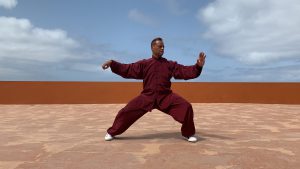From Monday to Thursday you can train for two and a half hours each morning and afternoon. Each day you can work on 2 separate disciplines (one from category A and one from category B) for 2.5 hours each, totalling 5 hours per day. This allows for 10 hours of intensive training in each of your chosen disciplines over 4 days. Please select one from each category.
A1 Neigong Solo and Partner Internal Work – Gianfranco Pace
Accessible to all
Exploring the internal aspects of Taijiquan by examining 5 forces: structure, elastic, spiral, explosive and sensitive force. During the week this study, solo and with a partner, will give an appreciation of internal movement.
A2 Wudang 8 Powers Taijiquan– Tina Faulkner Elders
Accessible to all
A fundamental form that is the foundation of all Wudang Taijiquan.
It incorporates Wuji standing and Taiji ball holding, the interchange of Yin and Yang and the prime 8 movements (Ba Fa) of Taijiquan.
A3 Baguazhang Fan – Sonja Schillo 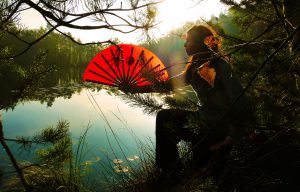
Accessible to all
Spiral energy is a source of creation and regeneration which flows in all living beings. In this workshop we will warm up with basic exercises of Baguazhang and continue to learn various interesting techniques of the Baguazhang fan.
While whirling and swirling, walking in circles and constantly twisting the body, we will easily experience the natural spiral energy which is released in the opening and collected in the closing fan techniques.
A4 Taking the Push out of Pushing Hands – Emma Lee
Accessible to all 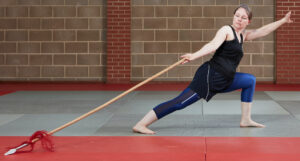
Pushing hands is an integral part of Tai Chi practice and is accessible to everyone. It allows us to gain a deeper understanding of our forms and to challenge our knowledge of them.
Pushing hands teaches us to listen with our bodies – to feel intention rather than hearing it. It is a language which challenges us to be present and a practice which teaches us valuable life skills, and about ourselves and others.
B1 Taiji Thirteen Power Sword – Yanira Jigetsu Rodriguez
Accessible to all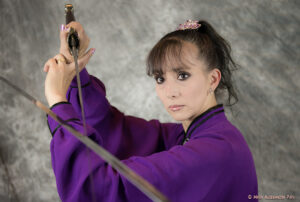
As with taijiquan barehand practices, the thirteen-power theory is fundamental to taijijian. ‘Burst,’ stab,’ ‘split,’ ‘point,’ ‘stir,’ ‘lash,’ ‘uplift,’ ‘carry,’ ‘strike,’ ‘cross,’ ‘press-down,’ ‘intercept,’ and ‘clear’—the thirteen sword energies—are found not only in taiji sword literature, but in that of the Wudang sword as well. In these sessions, Yanira will present solo and partner sword practices that extend one’s understanding the entire art of taijiquan.
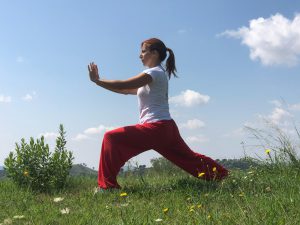 B2 The Mother Sequence – Margherita Padalino
B2 The Mother Sequence – Margherita Padalino
Accessible to all
This qigong set tells the ‘story of Taijiquan movement’, whose fundamental principles can be practised through simple but profound exercises. From the principles of connecting and alternating to oscillating in the centre; from spiral force to movement on a point, this sequence could revolutionise your Taijiquan practice.
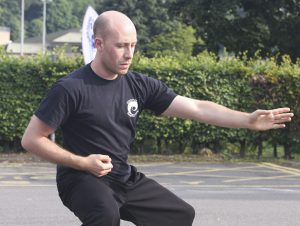 B3 Interpreting the Taiji Classics Through Sensing Hands – Ben Morris
B3 Interpreting the Taiji Classics Through Sensing Hands – Ben Morris
Interpreting the tai chi classics through the medium of partner work. Over the 4 days we will continue looking at how we can nurture and express the 8 essential energies with a mixture of theoretical interpretations and practical applications (resting more on the practical) and while it follows on from last year’s work it is equally accessible to newcomers.
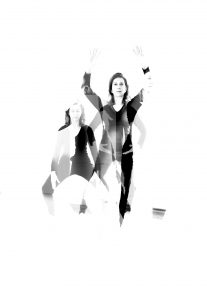 B4 In Between – Meditation & Movement – Margret Stürz
B4 In Between – Meditation & Movement – Margret Stürz
Accessible to all
Quietness has two aspects: the external inactive state of the body and the inner
mental quietness.
The term movement refers to external movement as well as to the inner movement
of the Qi.
Quietness and Movement are always to be looked at in terms of their relationship.
There is no change without movement – and movement finds only complete
expression on condition of inner ease / quietness. The inner ease is the basis of each Qigong and Taiji-practice. Each Qigong-exercise regulates the system of
meridians and recovers the flow of blood and Qi with its the main emphasis either in movement or in quietness.
I will offer you two types of Qigong exercises to practise:
Neigong = Inner Exercises and
Waigong = external exercises of the body
with the right balance of Meditation, Imagination, Breath, Qi and Consciousness for a quality of presence and awareness.
Copyright 2025 Tai Chi Caledonia | Privacy Policy
